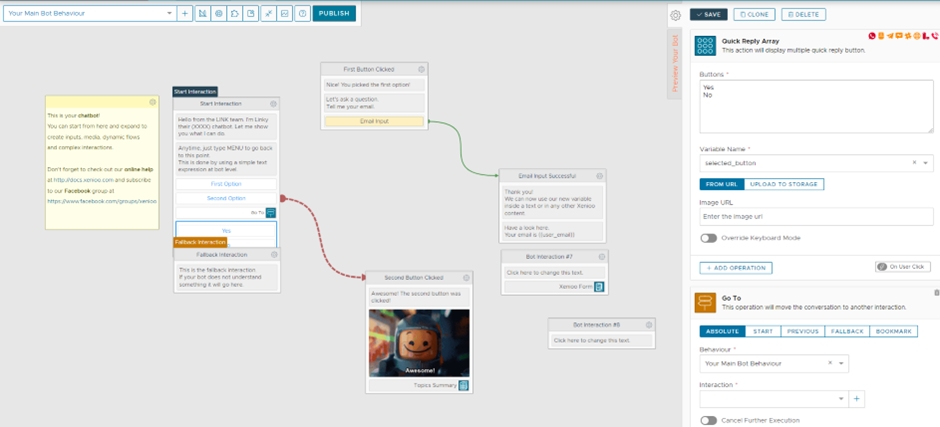Chatbot & Flow builder
Broadcasts
Broadcasts are very useful for many organisations allowing for mass messages to be sent at once. In turn, this acts as a mass trigger for a chatbot conversation to begin. Broadcasts act as scheduled tasks that send messages to your users based on a specific time or event. Each broadcast is attached to a unique behavior that can be modelled as you wish.
You can use broadcasts to alert users of a specific event or target a specific audience with a particular promotion. Broadcasts can also be triggered by a first or last user interaction, making it the perfect tool to recover a lost user conversation or ping the user for activity.
Perhaps you have a VIP sale going live at 8pm with a buyer journey bot ready to serve customers. You may broadcast an initial WhatsApp message to all users at 8pm who are opted in and tagged as VIP Members in your CRM. From here users can interact with the message and engage with your pre-arranged chatbot journey.
Alternatively, if a customer engaged with the buying journey but didn’t check-out, you may wish to broadcast a message the next day reminding all incomplete journey’s that the sale ends shortly.
It is worth noting that some messaging channels may hold certain restrictions when it comes to mass deliveries and opt-ins. Our Connect team or your account manager will be able to discuss the limitations (if any) of your desired channel with you in more detail.
Flow Builder
A flow builder is a visual tool used to design chatbots without coding. It allows users to create conversation flows by dragging and dropping elements, such as messages, questions, and decisions. MLC uses flow builders because of their user-friendly interface that is accessible for everyone. With a flow builder, you can automate back-and-fourths to alleviate manual tasks, create conversations with endless features without code and converse with confidence, knowing that you can test and train your bot to perform as you need it to.
Benefits:
Visual representation: Flow builders provide a visual representation of the chatbot conversation, making it easy to understand and troubleshoot.
Flexibility: Users can create complex conversation flows with a variety of elements to suit many different use cases.
Reusability: Re-use and copy common design elements across bots to save development time.
Collaboration: Allow multiple users to access and edit chatbots

Last updated